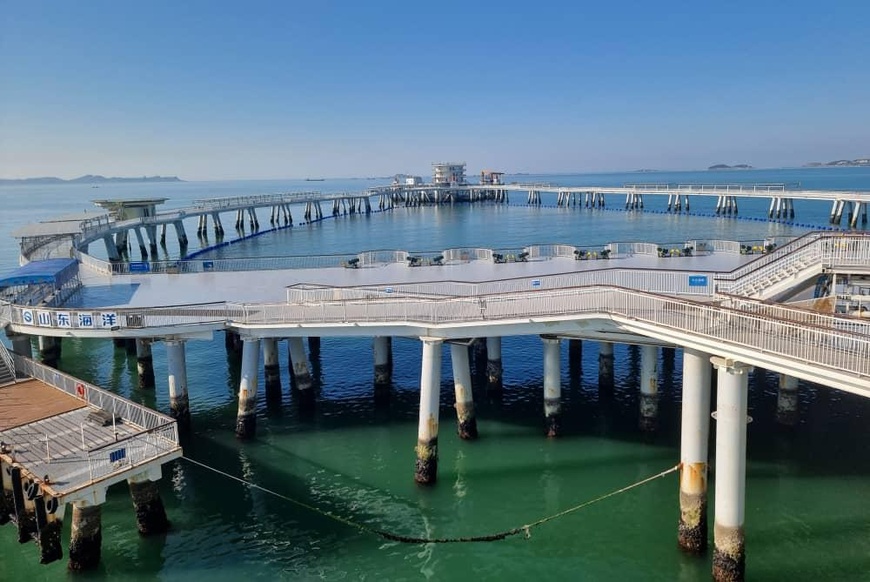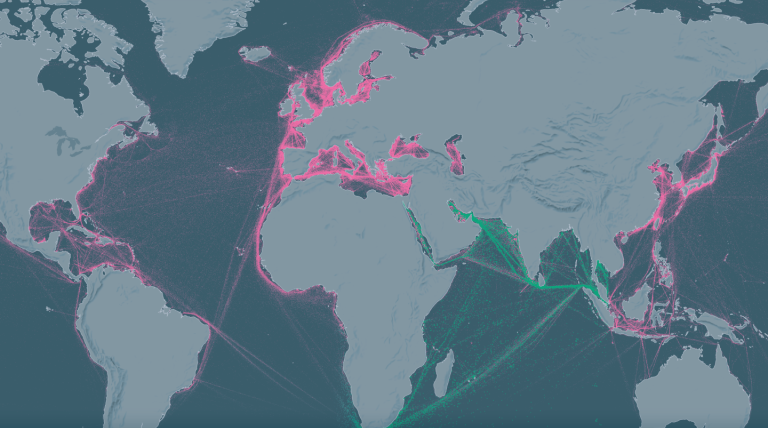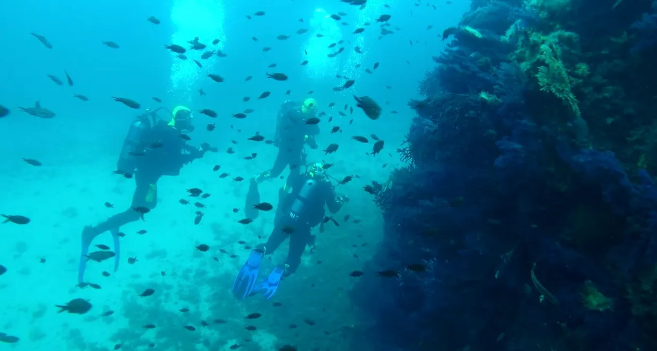In the Yellow Sea, off the Fishermen’s Wharf in Yantai, Shandong Province, China, stands the platform of the “Genghai No. 1” marine ranch complex. Its distinctive design, resembling a « necklace of precious stones, » symbolizes the country’s innovative blue economy. This multifunctional structure integrates fish farming, maritime tourism, scientific research, and technological development. It aims to modernize offshore fishing through technological innovation and enhance aquaculture efficiency. Offering a unique immersive experience, it embodies a new vision of “blue cultural tourism.”
« Genghai No. 1 » is equipped with cutting-edge technologies, including an automatic bait feeding system, advanced environmental monitoring, a ship collision avoidance system, autonomous boats, and underwater inspection robots. These features enable intelligent control of the entire production process, powered by big data analytics, 5G communication, and advanced safety management systems. Thanks to these technological innovations, the precision management level of marine fisheries has been significantly enhanced.
The platform also prioritizes environmental sustainability by utilizing various clean energy sources, such as solar and wind power. It is equipped with a wastewater treatment system similar to that of the Great Wall Station in Antarctica. In addition, automated equipment precisely controls the amount of feed distributed, thereby minimizing pollution from leftover bait.
The marine area defined at the center of the corridor platform reaches a depth of approximately 10 meters, covering a horizontal area of 40,000 square meters and a total water volume of 400,000 cubic meters—making it the largest aquaculture water body in the country. The platform’s automatic feeding system can distribute food with precision based on the fish growth cycle and environmental changes.
To improve the local marine ecosystem and promote carbon fixation, the platform has deployed 37,000 cubic meters of artificial reefs in natural fish aggregation zones to the south, around offshore fishing corridors, and in inland waters. These reefs provide essential anchoring and growth points for a wide variety of algae and crustaceans.
A crucial feature of « Genghai No. 1 » is its ability to maintain stable operations even under adverse weather conditions. Personnel can remotely control functions such as feeding and monitoring via mobile terminals, ensuring the continuous and safe operation of aquaculture activities.
Source: alwihdainfo




